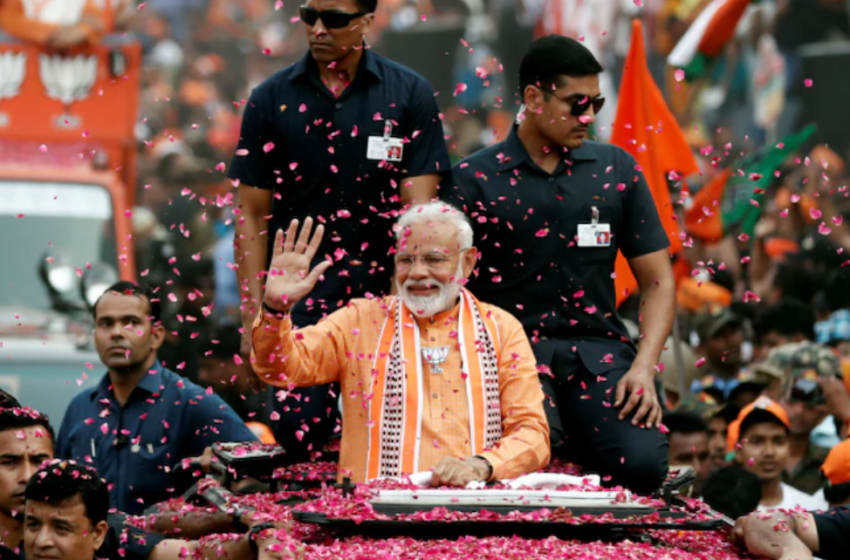
Lord Ram, the seventh avatar of Lord Vishnu, holds a significant place in the hearts of millions of Hindus. Born to King Dasharatha and Queen Kaushalya in Ayodhya, Lord Ram’s life is chronicled in the epic Ramayana, serving as a guide for righteous living.
The saga of the Ram Mandir in Ayodhya has been a long and tumultuous one, marked by legal battles and socio-political tensions.
The Ram Mandir Odyssey:
The journey of the Ram Mandir spans decades, with the pivotal point being the Babri Masjid demolition in 1992. This event sparked a series of legal battles and social unrest, as the site was claimed by both Hindus and Muslims. The protracted legal disputes saw several twists and turns, delaying the construction of the Ram Mandir for years.
Legal Battles and Delays:
The legal saga surrounding the Babri Masjid and Ram Janmabhoomi dispute involved intricate arguments from both sides. The case went through various courts, leading to prolonged debates and discussions. The final resolution came in 2019 when the Supreme Court of India delivered a historic verdict, granting the disputed land to the Hindus for the construction of the Ram Mandir.
Construction, Structure, and Design:
The Ram Mandir is not just a religious symbol; it is a marvel of architecture and intricate design. Craftsmen and architects from across the country came together to create a structure that pays homage to the rich cultural and architectural heritage of India. The temple’s design incorporates traditional elements while embracing modern engineering techniques to ensure longevity and stability.
The main sanctum, housing the idol of Lord Ram, is designed with precision and attention to detail, reflecting the spiritual essence of the deity. Intricate carvings, symbolic motifs, and sculptures adorn the temple, depicting episodes from the Ramayana and showcasing the artistic prowess of the craftsmen involved.
Community Involvement and Contributions:
The construction of the Ram Mandir is not only a testament to religious fervor but also a showcase of unity within the community. Devotees and well-wishers from all walks of life have contributed to the construction, whether through financial donations, volunteer work, or other forms of support. This collective effort has turned the dream of the Ram Mandir into a reality, emphasizing the communal spirit that underlines its significance.
Inauguration on January 22, 2024:
The Ram Mandir is a Hindu temple that is under construction in Ayodhya, Uttar Pradesh, India. The culmination of this decades-long struggle will be marked by the grand inauguration of the Ram Mandir or Ayodhya Ram Mandir opening date is January 22, 2024. This date holds immense significance, symbolizing the triumph of faith and the realization of a dream for millions of devotees.
Celebrity Presence:
The inauguration ceremony is expected to be a star-studded affair, with various celebrities, spiritual leaders, and political figures in attendance. Invitations have been extended to notable personalities like Kangana Ranaut, Amitabh Bachchan, Anupam Kher, Rajnikanth, Mukesh Ambani, Virat Kohli, Anushka Sharma, Deepika Padukone, Ranveer Singh and many more who have expressed their support for the construction of the Ram Mandir.
Global Attention and Diplomatic Significance:
The construction of the Ram Mandir has garnered global attention, reflecting its cultural and religious importance. Diplomats and representatives from various countries are expected to attend the inauguration, highlighting the global significance of this event. The Ram Mandir stands as a testament to India’s rich cultural heritage and its commitment to preserving and celebrating its diverse religious traditions.
Logistics and Arrangements:
As the date approaches, meticulous planning is underway to ensure the smooth conduct of the inauguration ceremony. Special arrangements are being made for the travel of invited guests, with flights and other transportation modes being considered to accommodate the attendees.
Impact on Tourism and Local Economy:
The completion of the Ram Mandir is anticipated to have a positive impact on tourism in Ayodhya. Pilgrims and tourists from across the globe are expected to visit, boosting the local economy and creating opportunities for businesses and residents. The government and local authorities are working on infrastructure development to accommodate the increased footfall, ensuring a seamless experience for visitors.
Experiencing Ayodhya’s Ram Mandir:
Visitors to Ayodhya will not only witness the grandeur of the Ram Mandir but can also immerse themselves in the rich cultural and spiritual heritage of the city. A tour of the temple complex will offer a chance to marvel at the architectural splendor, explore the intricately carved corridors, and witness the spiritual ceremonies that add to the sanctity of the place.
Local guides, well-versed in the history and mythology surrounding Ayodhya, can provide insights into the significance of each architectural element and share anecdotes from the city’s past. Pilgrims and tourists can also partake in religious rituals, enhancing their spiritual experience and connection to the divine.
Impact on Interfaith Relations:
The completion of the Ram Mandir marks a significant chapter in India’s history, not only for the Hindu community but also for interfaith relations. Efforts are being made to foster understanding and collaboration among different religious communities, emphasizing the need for mutual respect and coexistence. The hope is that the triumph of faith represented by the Ram Mandir can serve as a symbol of unity and tolerance, contributing to a more harmonious society.
Finally:
The journey of the Ram Mandir from legal battles to final construction stands as a testament to the endurance of faith and the resilience of a community’s spirit. The inauguration ceremony promises to be a momentous occasion, bringing together people from all walks of life to witness the realization of a shared dream.
As Ayodhya prepares to welcome Lord Ram’s grand abode, the Triumph of Faith serves as a beacon of unity and religious harmony, encapsulated within the magnificent architecture and design of the Ram Mandir.
The collective efforts of the community, the anticipated tourism impact, the presence of notable figures, the impact on interfaith relations, and the global attention further underscore the cultural, socio-economic, and diplomatic significance of this historic landmark.











